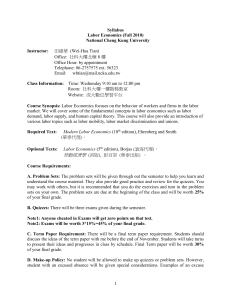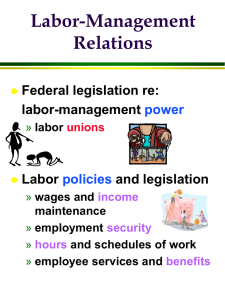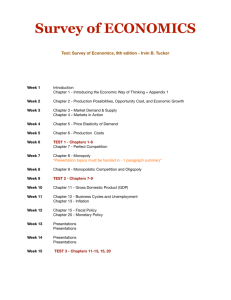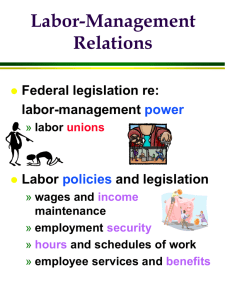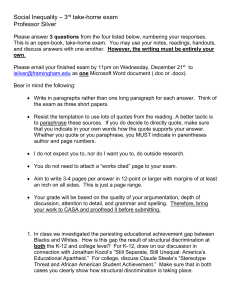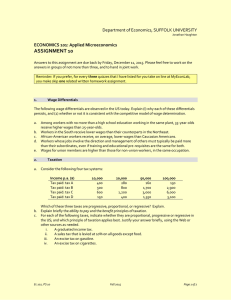Labor Economics 233 Professor Ken Burdett Office: 435 McNeil
advertisement
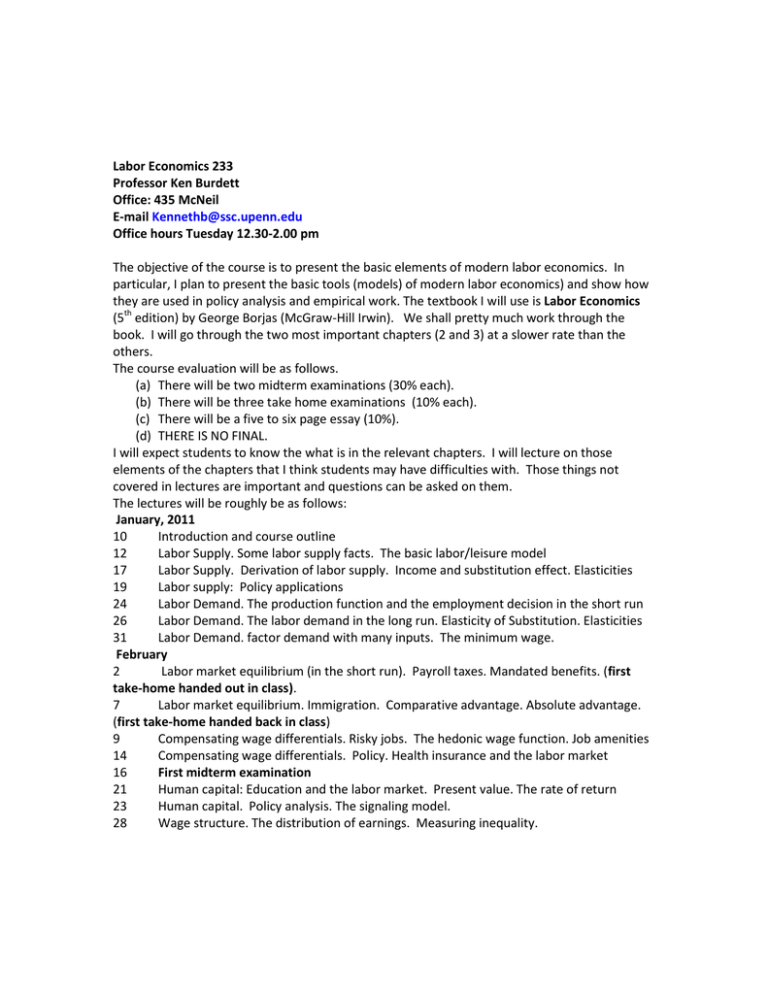
Labor Economics 233 Professor Ken Burdett Office: 435 McNeil E-mail Kennethb@ssc.upenn.edu Office hours Tuesday 12.30-2.00 pm The objective of the course is to present the basic elements of modern labor economics. In particular, I plan to present the basic tools (models) of modern labor economics) and show how they are used in policy analysis and empirical work. The textbook I will use is Labor Economics (5th edition) by George Borjas (McGraw-Hill Irwin). We shall pretty much work through the book. I will go through the two most important chapters (2 and 3) at a slower rate than the others. The course evaluation will be as follows. (a) There will be two midterm examinations (30% each). (b) There will be three take home examinations (10% each). (c) There will be a five to six page essay (10%). (d) THERE IS NO FINAL. I will expect students to know the what is in the relevant chapters. I will lecture on those elements of the chapters that I think students may have difficulties with. Those things not covered in lectures are important and questions can be asked on them. The lectures will be roughly be as follows: January, 2011 10 Introduction and course outline 12 Labor Supply. Some labor supply facts. The basic labor/leisure model 17 Labor Supply. Derivation of labor supply. Income and substitution effect. Elasticities 19 Labor supply: Policy applications 24 Labor Demand. The production function and the employment decision in the short run 26 Labor Demand. The labor demand in the long run. Elasticity of Substitution. Elasticities 31 Labor Demand. factor demand with many inputs. The minimum wage. February 2 Labor market equilibrium (in the short run). Payroll taxes. Mandated benefits. (first take-home handed out in class). 7 Labor market equilibrium. Immigration. Comparative advantage. Absolute advantage. (first take-home handed back in class) 9 Compensating wage differentials. Risky jobs. The hedonic wage function. Job amenities 14 Compensating wage differentials. Policy. Health insurance and the labor market 16 First midterm examination 21 Human capital: Education and the labor market. Present value. The rate of return 23 Human capital. Policy analysis. The signaling model. 28 Wage structure. The distribution of earnings. Measuring inequality. March 1 Wage structure. Why has inequality changed. Earning of the rich. Intergenerational inequality. 6 Spring Break 8 Spring Break 13 Labor Mobility. Migration. The facts. Who moves? 15 Labor mobility. Job turnover. Matching. Specific and general training. Age-earning profile. (second-take-home handed out in class) 20 Discrimination. Types of discrimination. Measuring discrimination. A taste for discrimination.(second take-home handed back in class) 22 Statistical discrimination. The economics of discrimination. 27 Labor Unions. The facts. Monopoly unions. Efficient bargaining. 29 Labor Unions. Strikes. The public sector 31 Incentive pay schemes. Piece rates and time rates. Tournament. April 3 Incentive pay schemes. Efficiency wages. Principle-agent model. 5 Unemployment. The facts. The types of unemployment. The search model. . (3rd takehome handed out in class) 10 Unemployment. Flows and stocks. The steady-state model. . (3rd take home returned in class) 12 Job Search (Essay returned in class) 17 The Phillips curve 19 Review. 24 Second Mid-term
